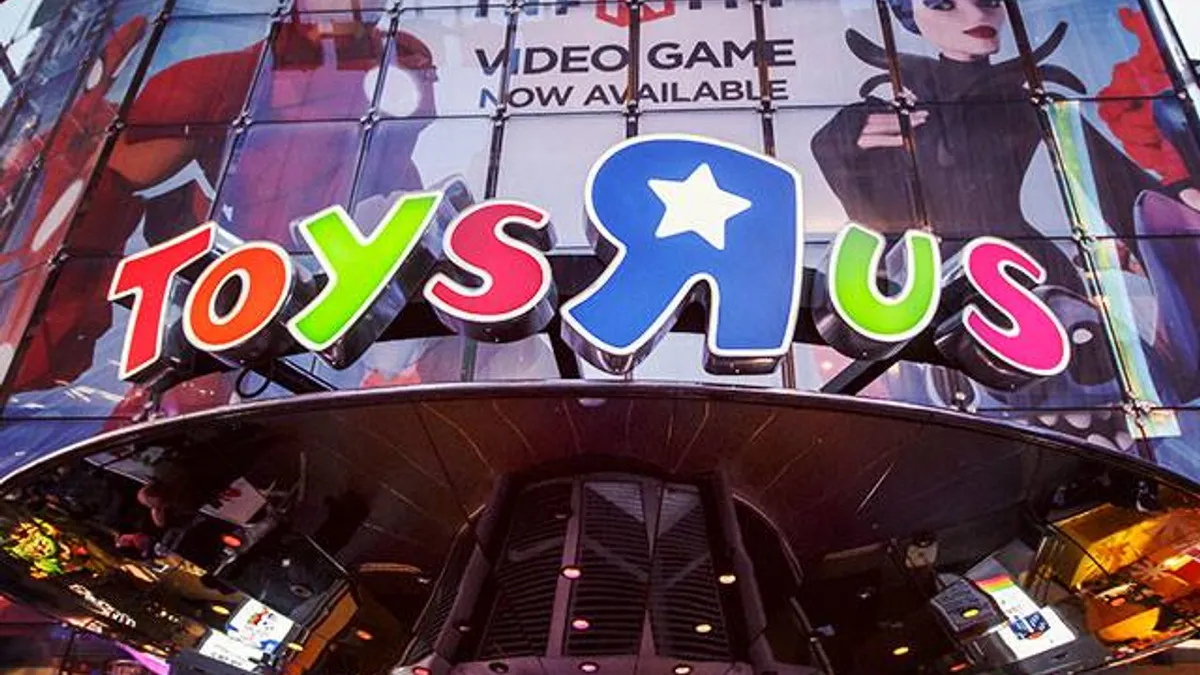Dive Brief:
- Toys R Us is weighing options for its Asian business, which could include spinning it off in an initial public offering worth as much as $2 billion, Bloomberg reported this week, citing unnamed sources familiar with the matter.
- The toy retailer and its partner in a regional joint venture, the Fung brothers, have been speaking with investment banks about possibly listing Toys R Us’ Asian unit on the stock exchange in Hong Kong, according to Bloomberg. A spokesperson for the retailer did not immediately respond to Retail Dive's request for comment.
- The retailer’s Asian unit was not included in Toys R Us’ Chapter 11 bankruptcy filing last month, but Bloomberg reports that the bankruptcy "could make a listing more complicated and harder to market to investors." It could, if successful, also return money to the company’s private equity owners, which acquired the retailer in 2005 in a leveraged buyout, according to Bloomberg. Joshua Friedman, a legal analyst with Debtwire, told Retail Dive, "Toys R Us’ creditors, however, would be looking towards the proceeds of any IPO or sale of the company’s Asian assets."
Dive Insight:
While Toys R Us, flanked by mass merchants and online sellers, has been losing market share in the U.S., it’s international business has cleared a path for growth.
The retailer’s international unit as a whole has grown 22% since 2012, the company said in its most recent 10-K. Last year, Toys R Us added 38 stores in China and Southeast Asia. Between 2014 and 2016, sales in China and Southeast Asia grew from $333 million to $375 million. Meanwhile, the retailer’s U.S. sales fell by $393 million, or $5.2%, over the same period, to $7.1 billion.
Citing Euromonitor data, Bloomberg reports that Toys R Us controls 20% of the Asia Pacific market for traditional toys like dolls and action figures. The joint venture’s closest competitor has just a 1.4% share.
Toy manufacturers also see growth across the Pacific. Mattel, for example, predicts that its China business can be three to four times bigger by 2020 "if well-executed." Mattel also has plans to expand more rapidly in other emerging markets, including India and Indonesia.
For Toys R Us, the region has been a high note on an otherwise rocky, downhill ride in the years since its acquisition by Kohlberg Kravis Roberts, Bain Capital Partners and Vornado Realty Trust. The company has been spending $400 million a year paying interest on the $5 billion debt left from that buyout. Meanwhile Amazon, Walmart, Target, Kohl’s, J.C. Penney and the rest of the world has gotten into the toy game, offering convenience and low prices while Toys R Us tries to manage its balance sheet.
In the first quarter of this year, the retailer's same-store sales fell by more than 4% and total sales fell by nearly 5% compared to the prior-year period. Toys R Us is taking steps to combat the market share loss. It has launched a new website, rebranded, added augmented reality features to its store experience and acquired an online toy marketplace.
But the company, the last nationwide pure player in toys, might need to take more drastic steps if it is to survive in a rapidly evolving retail market. "They're at risk of being caught in an increasingly shrinking center," Greg Portell, lead partner for consulting firm A.T. Kearney's retail practice, told Retail Dive in an earlier interview. "On the one hand, there are online players that can be more convenient. There are high-end bespoke toy shops that are much more curated. Then you have essentially a big box toy company that is stuck with an undifferentiated position and a cost base that doesn't reflect that."













